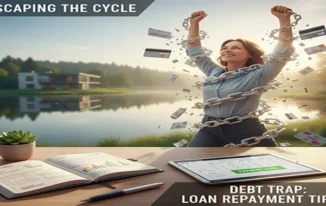Navigating the lending landscape with a less-than-stellar credit score can be challenging, but it is far from impossible. While “bad credit” typically means a FICO score below 580, many lenders specialize in offering personal loans to borrowers in this range. The key is knowing where to look and understanding the options—and trade-offs—involved.
Here is an overview of the best personal loan options and alternative strategies for borrowers with bad credit.
Understanding the Landscape: Higher Costs and Specific Lenders
The most significant reality for bad credit borrowers is that you will almost certainly face higher Annual Percentage Rates (APRs). Lenders view a low credit score as an increased risk, and they offset that risk by charging more interest. However, a personal installment loan is generally a much better option than high-cost products like payday or title loans.
The most competitive options for bad credit typically come from online lenders or credit unions.
1. Online Lenders: The Most Accessible Option
Many fintech companies and online lending platforms have developed sophisticated algorithms that look beyond just your credit score. They may also consider factors like your employment history, education, and cash flow. This often makes them the most accessible source for unsecured personal loans (loans that do not require collateral).
What to Look For:
- Prequalification: Many reputable online lenders offer a “soft credit check” prequalification process. This lets you see potential loan amounts, rates, and terms without impacting your credit score. Only upon a formal application will a “hard inquiry” be made.
- Low Minimum Credit Score: Some lenders may offer loans to borrowers with scores as low as 580, or even lower, in some cases. Lenders like Upgrade and Upstart are often cited in this category.
- Fast Funding: Many online lenders can disburse funds as quickly as the next business day after approval.
Key Trade-Offs:
- High APRs: While competitive for bad credit, the APRs can still be at the higher end of the permissible range (sometimes up to 35.99%).
- Origination Fees: Some online lenders charge an origination fee, a percentage of the loan amount deducted from the final payout.
2. Credit Unions: A Relationship-Based Approach
If you are a member of a credit union, or are eligible to join one, they can be an excellent resource. Credit unions are non-profit organizations that are generally more willing to work with members facing financial challenges.
- Favorable Terms: Credit unions often cap their personal loan interest rates, making them potentially lower than what you might find from a for-profit online lender.
- P.A.L.s (Payday Alternative Loans): Many federal credit unions offer PALs, which are small loans ($200 to $2,000) with a capped application fee and lower APRs than traditional payday loans.
3. Secured Personal Loans: Putting up Collateral
If you are struggling to qualify for an unsecured loan or want a better rate, a secured personal loan is an option. This loan requires you to put up an asset—like a car, boat, or a savings account—as collateral.
Pros and Cons:
| Feature | Secured Personal Loan | Unsecured Personal Loan |
| Collateral | Required (e.g., car, savings) | Not required |
| Risk to Borrower | High (You can lose the asset if you default) | Low (No asset to lose, but credit will be severely damaged) |
| Interest Rate | Generally lower | Generally higher |
| Approval Odds | Potentially easier to get approved with bad credit | More reliant on credit score and income |
If you choose a secured loan, proceed with extreme caution, as the risk of losing your asset is very real if you miss payments.
Strategies to Improve Your Approval Odds and Lower Costs
Regardless of the lender you choose, you can take steps to strengthen your application:
- Find a Co-signer: A co-signer with good credit and a strong income can dramatically increase your chances of approval and secure a much lower interest rate. This person is equally responsible for repaying the loan.
- Borrow Less: Lenders are more comfortable approving a smaller loan amount, as it represents a lower risk. Only borrow what you absolutely need.
- Check Your Credit Report: Mistakes on your credit report are common. Review your report for free and dispute any errors, as a quick fix could potentially boost your score.
- Use Loan Proceeds for Debt Consolidation: If your goal is to consolidate high-interest credit card debt, many lenders see this as a positive and may offer slightly better terms, knowing the funds are going directly to a debt reduction.
Alternatives to Personal Loans
If you cannot find an affordable personal loan, consider these alternatives:
- Credit Cards for Bad Credit: While they often have high interest, a secured credit card or a low-limit credit card for bad credit can provide emergency funds and, more importantly, help rebuild your credit with responsible use.
- Borrow from Friends or Family: While delicate, this may be the lowest-cost way to get the funds, provided you draft a clear, professional repayment agreement to protect the relationship.
- Home Equity (if you are a homeowner): If you have equity in your home, a Home Equity Loan or Home Equity Line of Credit (HELOC) generally offers the lowest interest rates, but it puts your home at risk if you default.
The Bottom Line
While a bad credit score means the most favorable loan terms are off the table for now, options exist. Start by exploring prequalification with reputable online lenders and checking with local credit unions. Most importantly, ensure the loan you choose has a manageable monthly payment that allows you to repay the debt on time. Success in managing this loan is a powerful tool for rebuilding your credit and accessing better financial products in the future.













